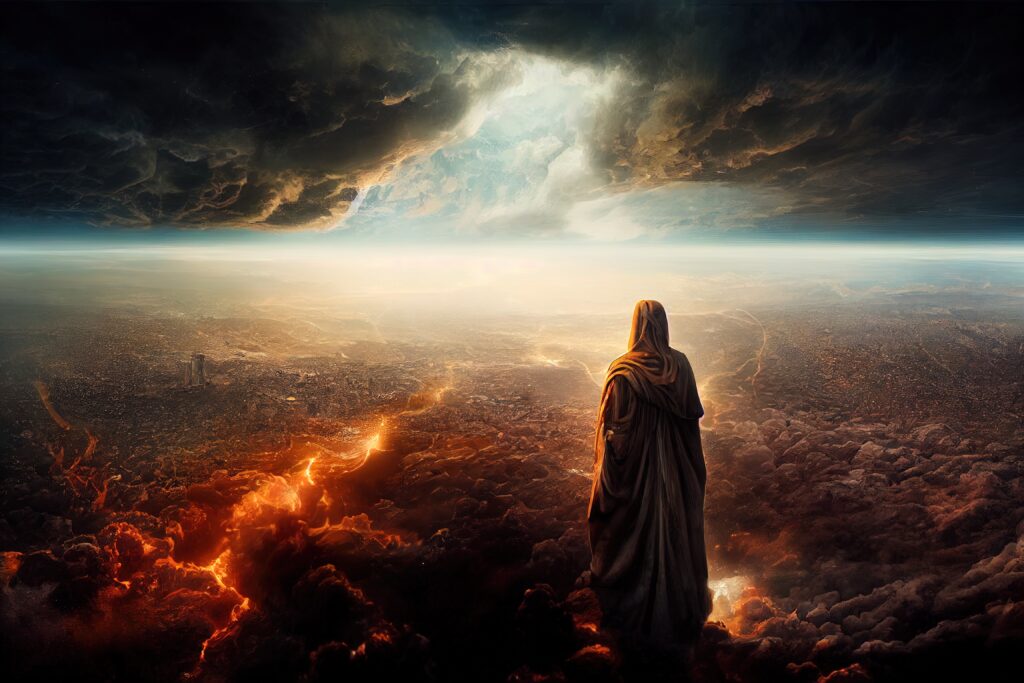
What is the Crisis About?
“AND I WEPT MUCH BECAUSE NO ONE WAS FOUND WORTHY TO OPEN THE BOOK OR TO LOOK INTO IT.” – REVELATION 5:4.
We are often reluctant to identify with the positive characters in the Bible. We assume that people like John were on a far higher spiritual level than we are. Yet the Bible invites us to model our lives on the characters in it (Heb 6:12). Paul, for example, encourages the members of his churches to imitate him (1 Cor 4:6-7). One of the best ways to apply the Bible’s moral lessons to our lives is to give careful attention to the positive and negative examples we find in their stories.
In this and other verses, John becomes part of his own vision! It is encouraging to realize that John does not portray himself as a great saint, but as one who makes mistakes and is even a bit clueless at times. In Revelation 5:4 John weeps because he has no idea what is going on in heaven. He sees but he doesn’t understand. In Rev 7:14 an elder asks him a question and he has no idea how to answer it. In Rev 19:9-10 and 22:8-9 he falls down to worship an angel only to be rebuked for it. Now to do this once might be understandable. But to do it a second time a short while later really looks foolish! Apparently prophets are not automatically smart in all areas.
The good news is that people like you and I can identify with John and other biblical characters in their weakness.
Elijah was easily discouraged and depressed, yet at God’s command he could make it stop raining! David murdered at least 201 innocent people in his lifetime, yet God found a way to forgive him! John the Baptist questioned whether Jesus was really the Messiah yet Jesus called him the greatest of the prophets (Matt 11:1-13)! Job and Jeremiah were “saints” who wished they had never been born (Job 3:3; Jer 20:14-15)! It is encouraging to our desponding hearts to know that through God’s grace they could gain fresh vigour to again rise above their evil natures; and, remembering this, we are ready to renew the conflict ourselves and “fight the good fight of faith.” (1 Timothy 6:12)
The crisis in the throne room is related to Satan’s rebellion. This planet, although created by God, has been under the dominion of the usurper, Satan – a murder and liar from the beginning Jesus told us. (John 8:44). This is why he, and his cohort, were cast out of heaven (Revelation 12:1-12). John’s tears expressed the longing of God’s people, since Adam, for salvation from the bondage of sin. The sealed scroll comprised God’s plan for resolving the sin problem. No doubt with His immeasurable power God Himself could realize that plan. However, the redemption of the fallen human race required something special, and that was Jesus, who did “overcome” and thus was worthy to open the book, to assume the lordship over this earth, and become our Mediator (advocate or lawyer) in the court room of the heavenly sanctuary.
But what is the Meaning of the Sealed Scroll. Some biblical options include a last will and testament, the constitution of Israel (Deuteronomy), a record of human history, an emblem of the Lamb’s right to rule, a record of human deeds, the book of life, and a list of rewards and punishments for human behaviour (judgment). The scroll contains the history of God’s providences and the prophetic history of the nations and the church. This will become evident in chapters 6 to 11 when the seals are systematically removed. The sealed scroll represents the plan of salvation. John weeps (Rev. 5:4) because the plan of salvation will not be implemented unless someone is found worthy to open the scroll. How do we know the book (Rev. 5:2 [Greek: biblion]) is a scroll and not something more typical of books today? We know because the same word is used in Revelation 6:14, which says that the “sky receded as a scroll [Greek: biblion] when it is rolled up”.
The Lamb (Jesus) is uniquely worthy to open the scroll (Rev. 5:5, 6). The key qualities of the Lamb in the chapter are twofold. The Lamb is slain, which points to His human nature. On the other hand, the Lamb is worshiped along with the One sitting on the throne (Rev. 5:13). This points to His divinity. The God-man is unique in all history.
Of all intelligent beings (see John 1:3, 14), only the divine-human Jesus could fully reveal the character of God and atone for human sin, because He is fully God and fully human. So, embedded in this symbolic vision is a profound Christology, a doctrine of who Jesus Christ is.
This is why the book is called “The Revelation of Jesus Christ.”
